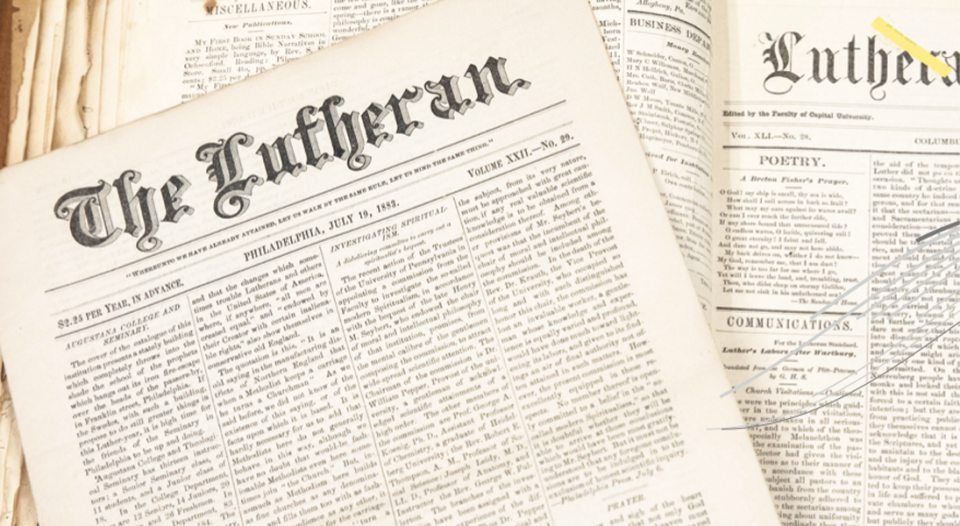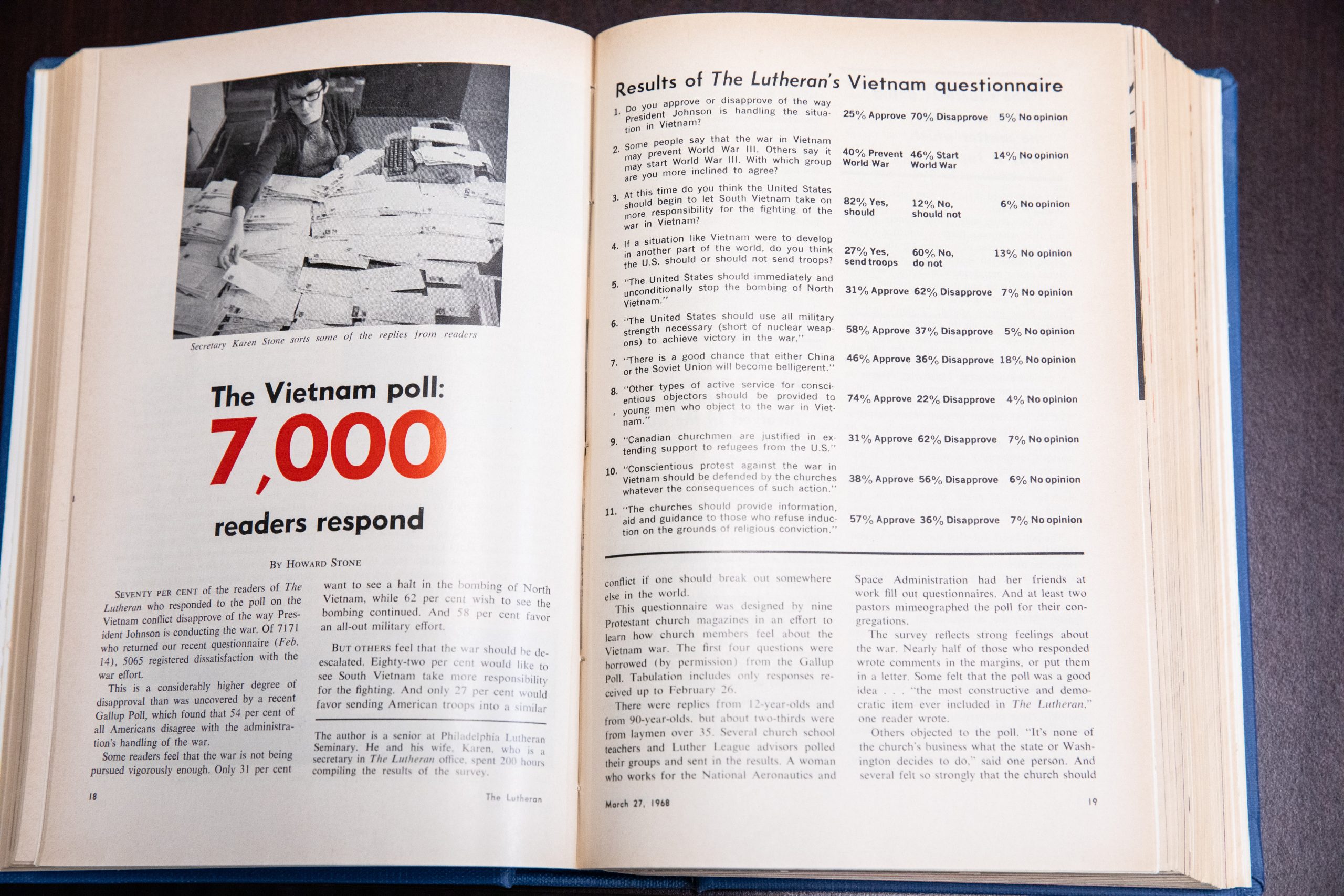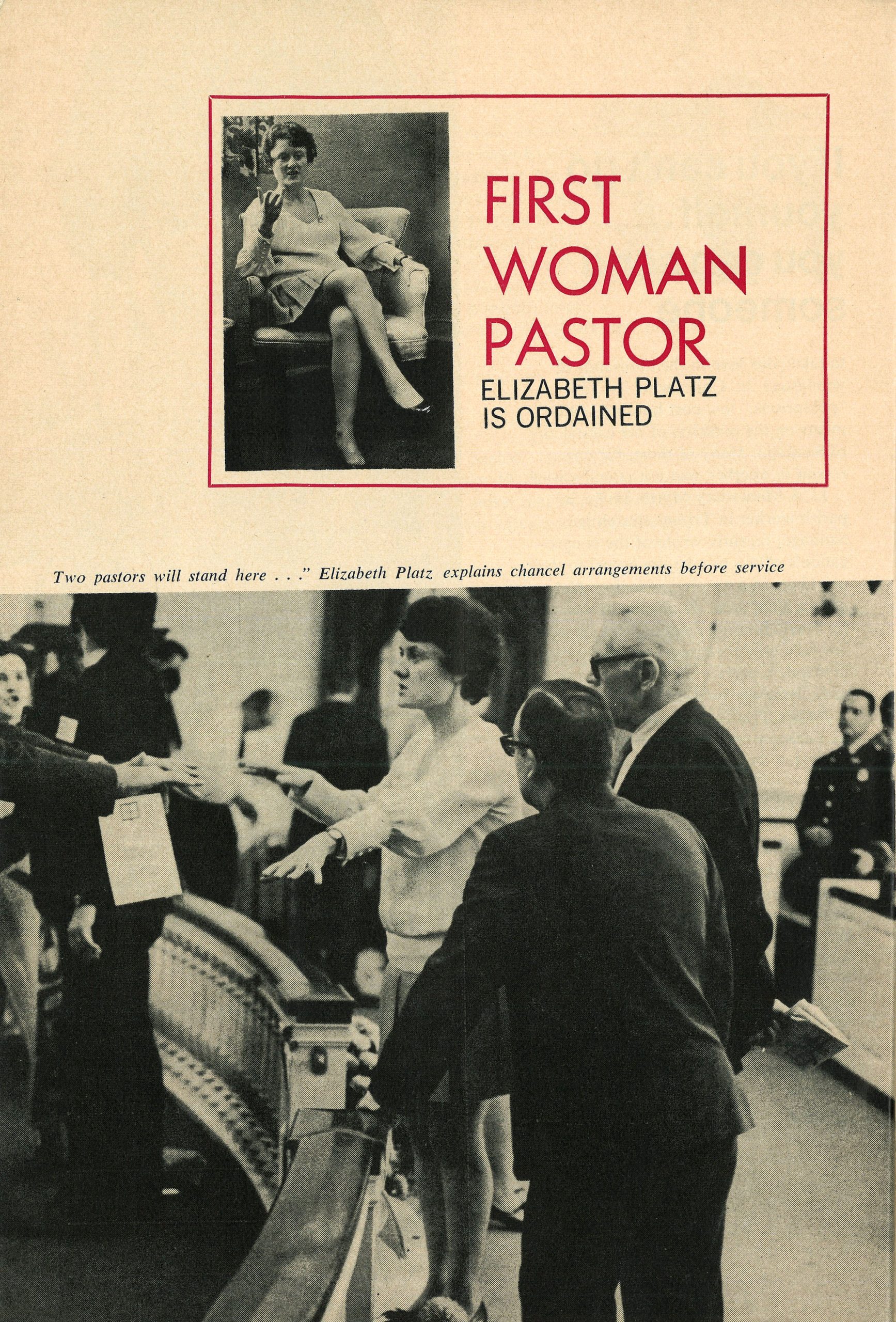Compiled by Living Lutheran staff
Special thanks to the ELCA Archives
Living Lutheran and its predecessors have been telling the stories of God’s people living their faith for nearly two centuries. The formats, distribution frequency and even church bodies represented have changed for these publications—but the core mission, to share the good news through Lutherans’ stories, hasn’t.
Next year we will continue to find new and farther-reaching ways to tell those stories at livinglutheran.org and beyond. And we will continue to find ways to serve, connect with and share the stories of Lutherans all across our church.
As the final print edition of Living Lutheran hits mailboxes this month, we seek to honor the legacy of Lutheran publications whose tradition we have continued, and to mark some of the major milestones in our history. What follows is not a comprehensive timeline of every meaningful event in the life of the church, but rather a collection of notable ways our publications have covered and helped shape the conversation around some of those vital moments, in both world and church events.
 1831
1831
The Lutheran Observer launches
American Lutheran publications begin with the launch of the first issue of The Lutheran’s predecessor, The Lutheran Observer, in Baltimore.
1842
The Lutheran Standard first publishes
The Lutheran Standard is first published in Columbus, Ohio. Following the formation of the American Lutheran Church (ALC) in 1960, it merges with the publications of the ALC’s predecessor church bodies.
1860
The Lutheran is established
The Lutheran, at the time one of several denominational Lutheran magazines, is established. In 1919, it consolidates with several publications, including The Lutheran Observer.
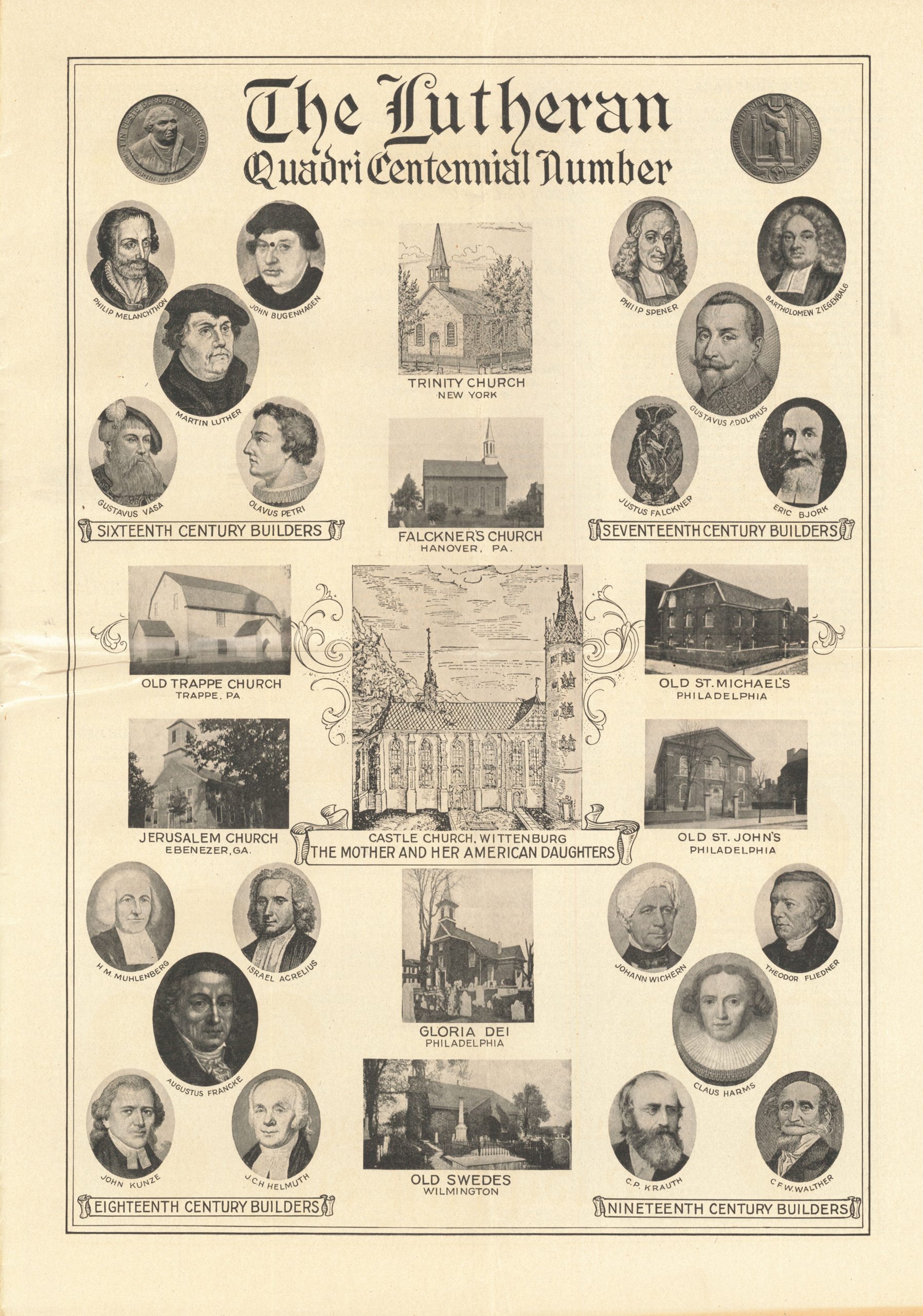
1917
400th anniversary of the Reformation
The 400th anniversary of the Reformation is observed. The Lutheran Church Herald—launched this year as the publication of the Norwegian Lutheran Church after having merged with The Lutheran Herald and The United Lutheran—recognizes the milestone with a cover story. The issue also includes features on Martin Luther as a musician and as the founder of popular education, as well as on the legacy and continued relevance of the Reformation to ministry of the time.
1941
“War is here”
Following the Dec. 7 attack on Pearl Harbor, The Lutheran Herald publishes “A Statement of Policy” written by the editor. “On this Lord’s day evening, December 7, 1941, there seems to be no doubt that war is here,” the piece begins. “Congress has not as yet met to consider the attack by Japan. But there can be little doubt that the morrow will see a declaration that a state of war exists.” It goes on to declare that “The Lutheran Herald will remain unswervingly true to its primary objective: that of serving the Lord Jesus Christ and His church. To that end, we shall offer the gospel of reconciliation and comfort, and rebuke sin and evil wherever it is found.”
1945
The war ends
The cover of the July 30 edition of The Ansgar Lutheran—the English publication of the united Danish Evangelical Lutheran Church in America and, subsequently, the United Evangelical Lutheran Church—includes two photos. One features employees of the Naval Ammunition Depot in McAlester, Okla., participating in a prayer offered by Chaplain C.F. Yaeger on V-E Day, celebrating the allies’ acceptance of Germany’s unconditional surrender of its armed forces on May 8, bringing an end to World War II. The second photo shows Chaplain E.J. Katterhenrich with officers of the U.S.S. Prince William, leading a memorial service for President Franklin Roosevelt, who had died in office April 12.
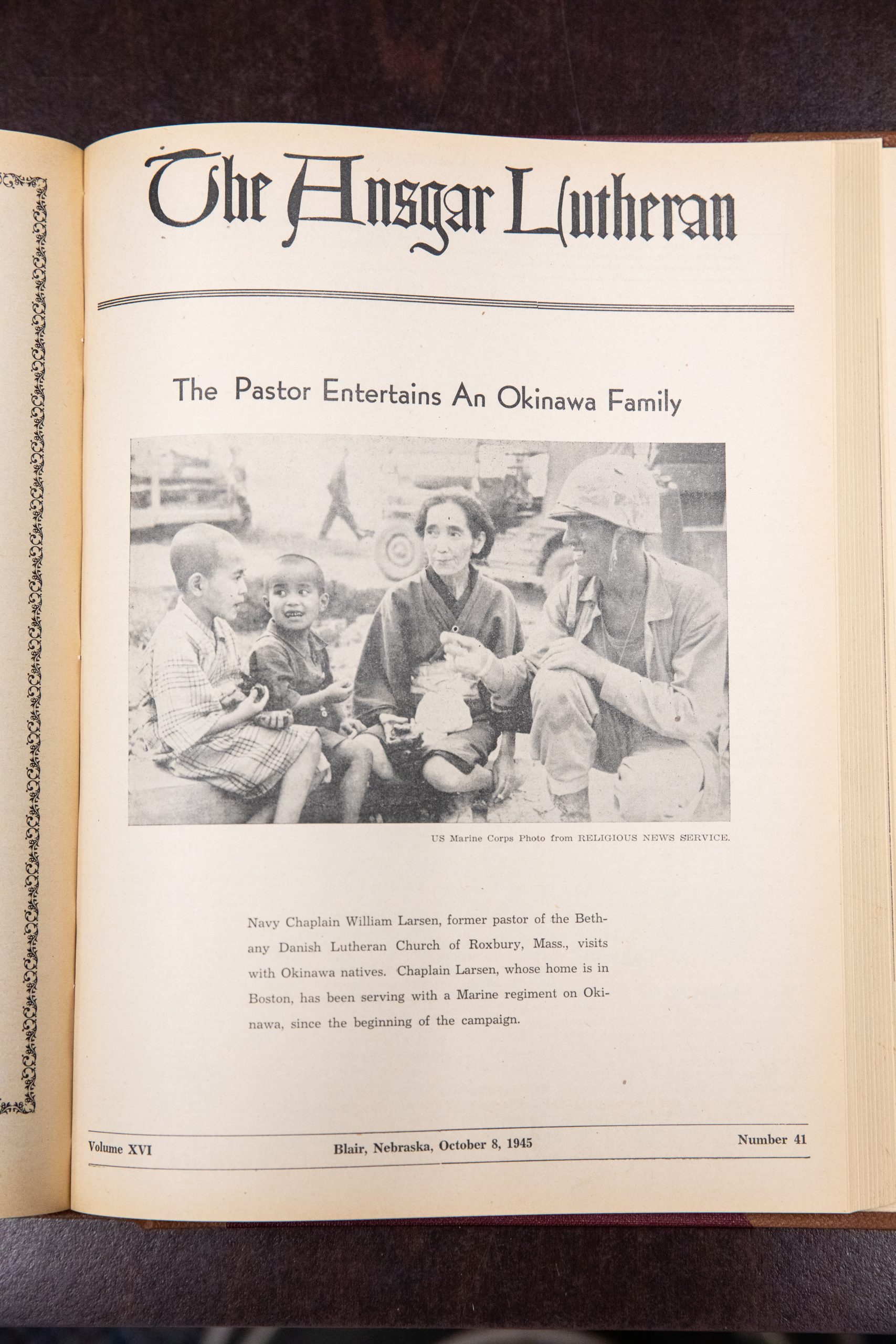 Atomic bombs dropped
Atomic bombs dropped
The Ansgar Lutheran runs an editorial weighing the complexities of the atomic bomb in its Sept. 17 edition after the United States detonated two of them over Hiroshima and Nagasaki in Japan. “In a world tense with war and sick of killing and destruction exploded the atomic bomb,” the piece began. “It did more than kill and torture the hapless thousands of Japanese. It set men thinking. It made men fear—fear lest men’s knowledge had gone too far, that his own destruction is inevitable.”
Cover story on chaplain in Japan
The Oct. 8 cover of The Ansgar Lutheran features U.S. Navy Chaplain William Larsen, former pastor of Bethany Danish Lutheran Church in Roxbury, Mass., visiting with an Okinawa family following a battle there earlier in the year. It was the last major battle, and one of the bloodiest, of World War II. Larsen had been serving with a Marine regiment since the beginning of the campaign.
1954
Lutheran Church Productions given an original indulgence
The Dec. 21 edition of The Lutheran Herald, the publication of the Evangelical Lutheran Church, includes a photo of Johannes Stuhlmacher, manager of the German production company Luther-Film GmbH, presenting an original parchment indulgence authorization issued on behalf of Pope Leo X in 1516. It is being presented to leadership of Lutheran Church Productions, sponsors of the popular 1953 film Martin Luther, which depicts the abuse of such indulgences.
1956
In its Sept. 15 edition, The Lutheran Standard publishes “ALC Pastor Not Afraid Over Bombing of House,” a story about Robert Graetz, a white ALC pastor of the all-Black Trinity Evangelical Lutheran Church in Montgomery, Ala. Among the white ministers of Montgomery, Graetz was nearly alone in supporting the bus boycott that would integrate the city’s public transit system. He and his family were subsequently made a target of violent attacks. In February 1957, the Standard publishes another story, “Pastor Graetz’s Home Bombed Again During New Outbreak of Violence,” following a second attack in January. “Pastor Graetz affirmed that he was more determined than ever to stick to his post,” the article reads.
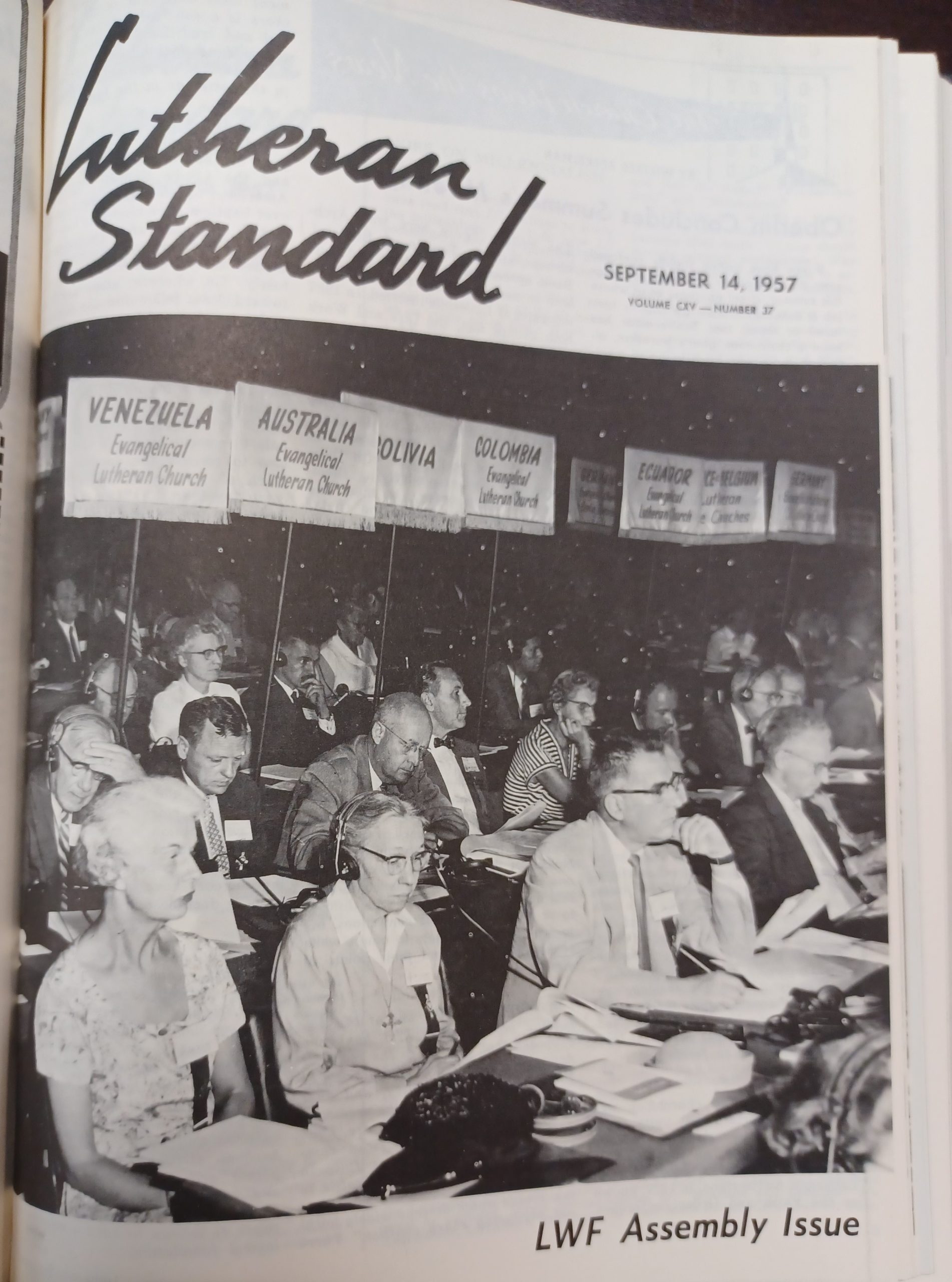 1957
1957
LWF Assembly coverage
The Lutheran Standard publishes its Lutheran World Federation (LWF) Assembly issue, covering the federation’s third assembly, held in Minneapolis Aug. 15-25. Delegates from around the world met there on the occasion of the 10th anniversary of the LWF and discussed the myriad issues their countries faced against a postwar backdrop. The assembly’s theme, “Christ Frees and Unites,” was addressed in 20 discussion groups, with a group led by LWF President Franklin Clark Fry formulating “theses” for acceptance by the assembly. Twenty thousand people were estimated to have attended the opening night service.
 1960
1960
“Clergymen form picket line”
In its May 4 edition, The Lutheran reports on church groups participating in sit-in demonstrations at lunch counters in the Southern states to protest businesses’ segregation policies. It runs a photo of Black and white clergy members forming a picket line on Fifth Avenue in New York City, marching at a chain store in support of desegregation at Southern businesses.
1962
“Cuba from My Window”
The Lutheran Standard publishes the article “Cuba from My Window” in its Nov. 20 edition. The piece is a first-person account by Lambert Brose, a Lutheran pastor, about the Cuban Missile Crisis. Brose writes from his office at the Lutheran Church Center in Washington, D.C., directly across from the Cuban embassy. He speculates about a Christian response to the cultural moment, following President John F. Kennedy’s recent televised speech about U.S. spy planes having discovered Soviet missile bases in Cuba. “What can you and I do about it?” Brose asks. “I can offer no new solutions. Our Refuge has been there all the time.”
1963
Following the 16th Street Baptist Church bombing on Sept. 15, The Lutheran Standard runs a news report, “Nation Protests, Mourns, Murderous Birmingham, Alabama, Explosion.” The terrorist bombing of a Black church in Birmingham, Ala., by members of the Ku Klux Klan killed four children and marked a turning point in the U.S. civil rights movement. An editorial, “Who Threw That Bomb?” runs in the Oct. 22 edition. Ewald Bash, a pastor serving in the ALC’s youth department, is quoted as saying, “All of us should put ashes on our heads as a public acknowledgement of our guilt in this.”
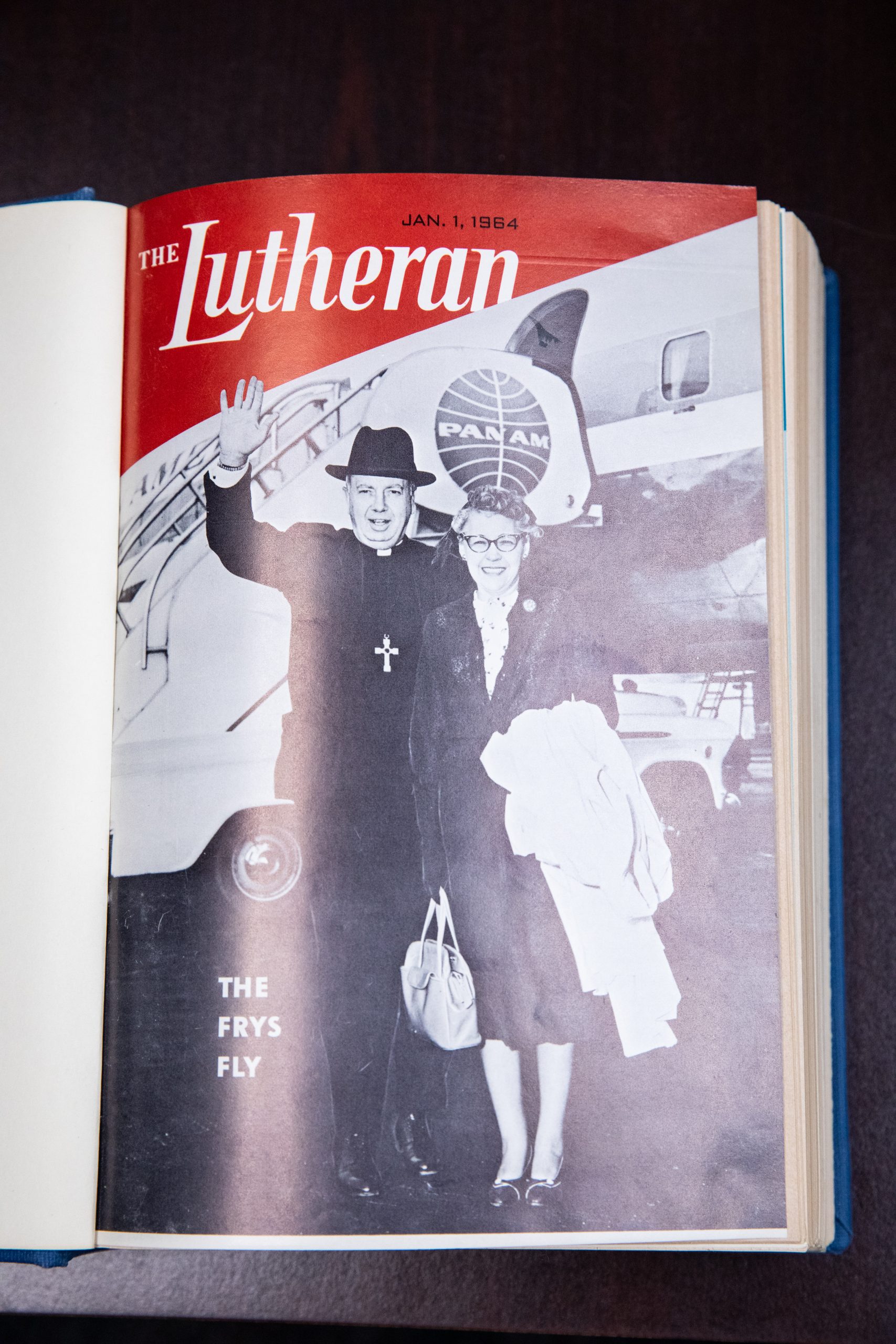 1964
1964
“The Frys Fly”
The cover photo of the Jan. 1 edition of The Lutheran depicts Franklin Clark Fry and his wife Hilda boarding a Pan American airplane with the headline “The Frys Fly.” Fry was elected president of the United Lutheran Church in America in 1944 and was known as “Mr. Protestant” due to his ongoing efforts toward unity among Protestant church bodies, having been featured on the cover of Time magazine for his ministry in 1958. He was instrumental in the formation of the LWF—of which he became president in 1957—the World Council of Churches and the National Council of Churches.
1968
Vietnam survey in The Lutheran
The results of a questionnaire about the Vietnam War, designed by nine Protestant church magazines and included in the Feb. 14 edition of The Lutheran, are shared in its March 27 edition. More than 7,000 Lutheran readers responded to the survey, created in an effort to learn how church members felt about the war. Seventy percent of poll respondents disapproved of the way President Lyndon Johnson was conducting the war. The magazine reports that this was a considerably higher degree of disapproval than was found in a recent Gallup Poll. Some readers felt the war was not being pursued vigorously enough while others felt it should be de-escalated.
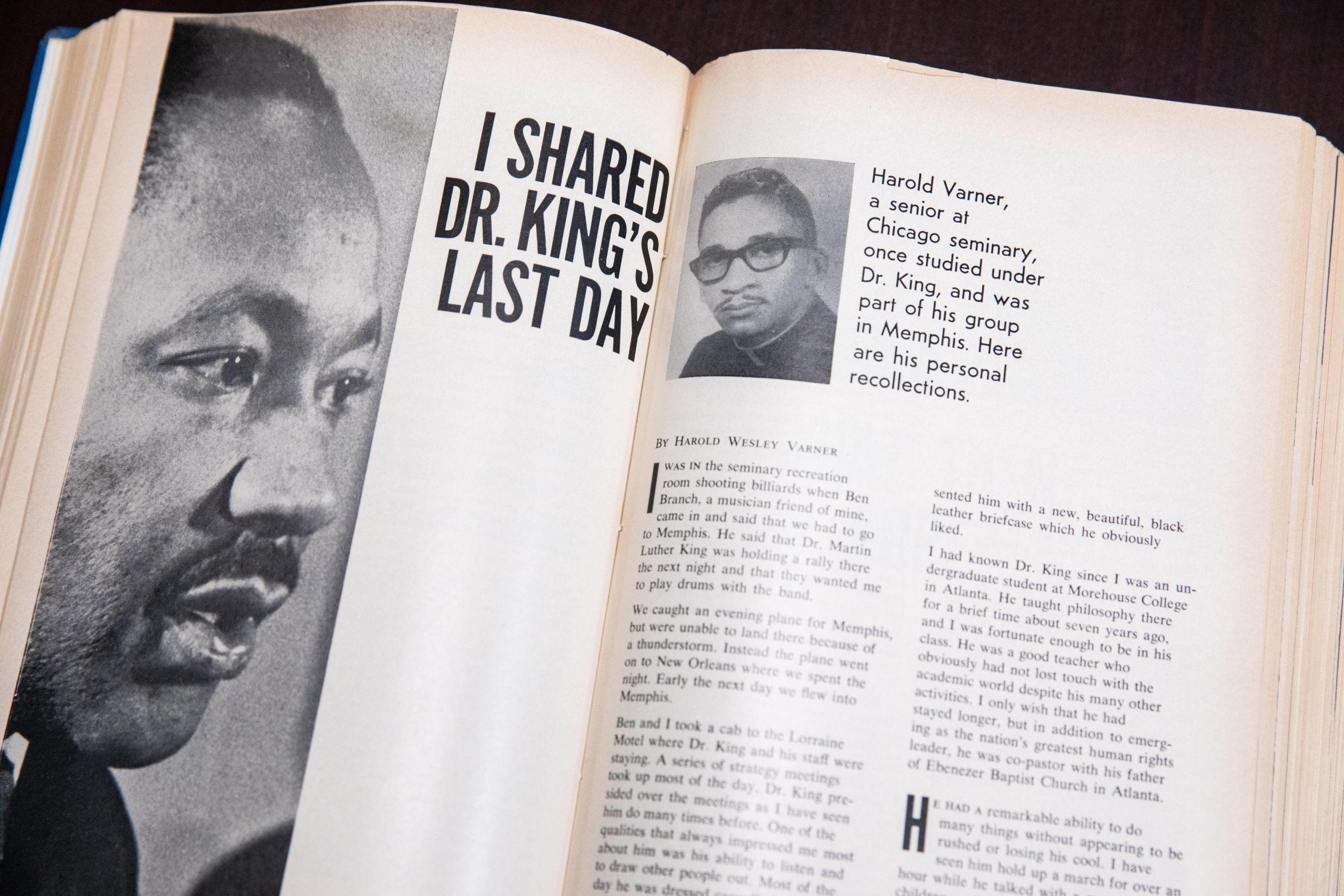 “I Shared Dr. King’s Last Day”
“I Shared Dr. King’s Last Day”
Following the assassination of Martin Luther King Jr. on April 4, The Lutheran runs “I Shared Dr. King’s Last Day” in May. The piece is a first-person account by then-Lutheran School of Theology at Chicago student Harold Wesley Varner, who was feet away from King when he was killed. A musician, Varner was the drummer in the jazz band scheduled to play at a rally in support of striking Memphis sanitation workers that King had organized. Varner had been a student of King’s at Morehouse College in Atlanta and took part in the strategy meetings the civil rights leader led on the day he was killed. “One of the qualities that always impressed me most about him was his ability to listen and to draw other people out,” Varner writes, reflecting on spending time with him that day.
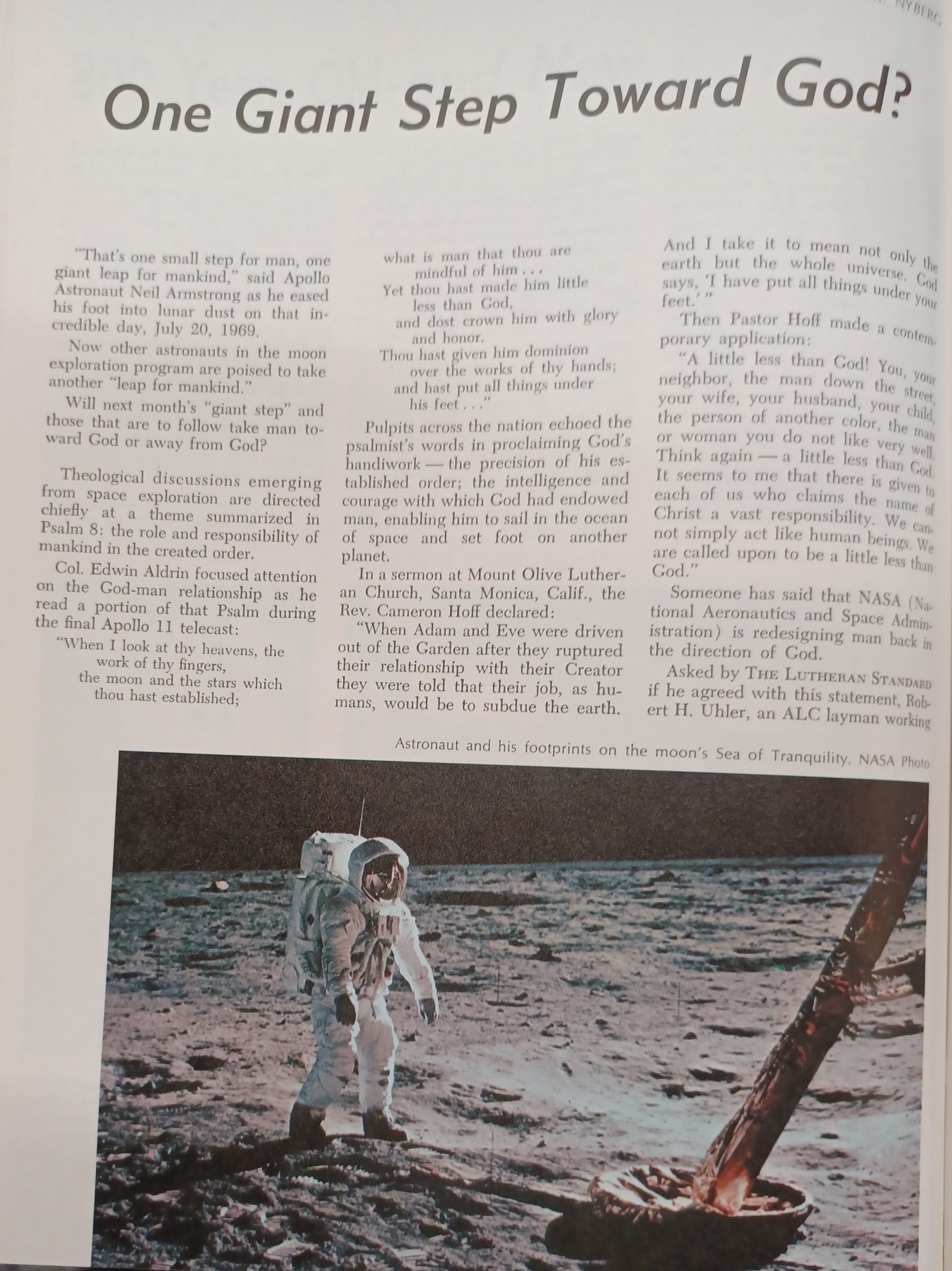
1969
In its Oct. 28 edition, The Lutheran Standard publishes “One Giant Step Toward God,” a story on theologians and ministers reacting to the July 20 moon landing. The magazine reports that the chaplain aboard the U.S.S. Hornet aircraft carrier during the welcome ceremonies for astronauts Neil Armstrong, Buzz Aldrin and Michael Collins was John A. Piirto, a Lutheran Church in America (LCA) pastor. Piirto offered a prayer of thanksgiving, heard by millions via broadcast, for the safe return of the moon explorers. “As we try to understand and analyze the scope of this achievement for human life, our reason is overwhelmed with abounding gratitude and joy, even as we realize the increasing challenges of the future,” he said in the prayer.
1971
“First Woman Pastor”
In 1970 the LCA votes to ordain women at its fifth biennial convention, as does the ALC at its fifth general convention that year. Elizabeth Platz becomes the first woman in North America ordained by a Lutheran church body when she is ordained into the LCA that November. In its Jan. 6, 1971, edition, The Lutheran runs the story “First Woman Pastor: Elizabeth Platz Is Ordained.” Platz, then a chaplain at the University of Maryland, is quoted in the article as saying, “As an ordained pastor, I won’t be looked upon as an assistant or a glorified secretary, but as a professional.”
1974
In January, about 400 students and 40 members of the “faculty majority” of the Lutheran Church—Missouri Synod’s (LCMS) Concordia Seminary in St. Louis walk out on strike to form Concordia Seminary in Exile, later Christ Seminary-Seminex, following a schism in the LCMS. The Feb 6. edition of The Lutheran publishes a news report on the developing story. A later news story, in its March 20 issue, reports that the “exiled” professors were given temporary faculty at two nearby seminaries, where classes for the students were welcomed. The American Association of Theological Schools is reported to have sanctioned the arrangement.
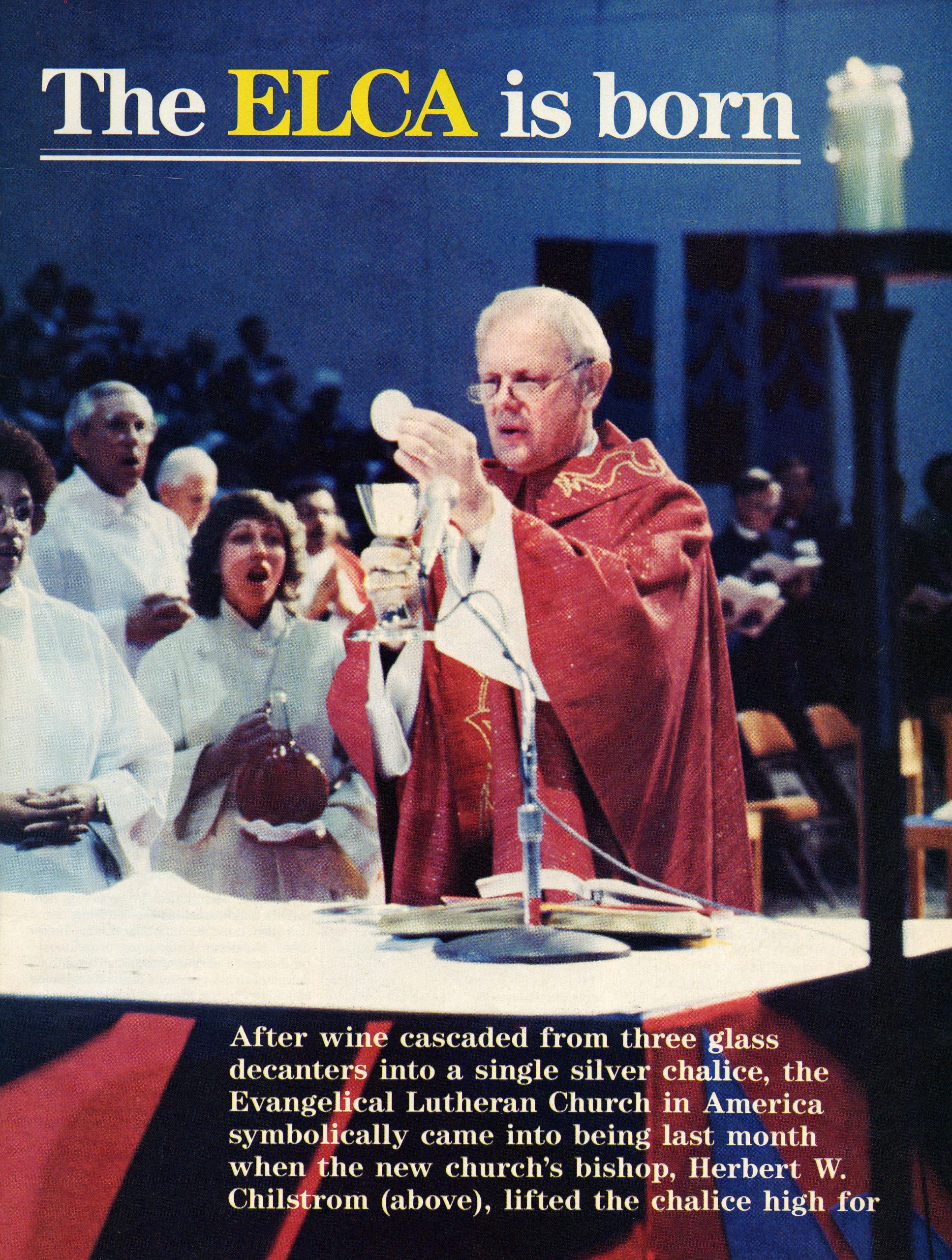 1987
1987
ELCA forms
On April 30, the ELCA is formed by the merger of the Association of Evangelical Lutheran Churches (which itself formed from the 200 congregations that left the LCMS following the establishment of Seminex), the ALC and the LCA, at the ELCA Constituting Convention in Columubs, Ohio. The May 20 cover photo from the LCA’s The Lutheran features the “First ELCA officers,” Bishop Herbert W. Chilstrom, Secretary Lowell G. Almen and Vice President Christine Grumm. The issue’s story “The ELCA is born” features an opening photo of Chilstrom lifting a single chalice after three glass decanters of wine had symbolically been poured into it for communion during convention worship. The ELCA’s magazine would also be named The Lutheran, with the first issue appearing in January 1988.
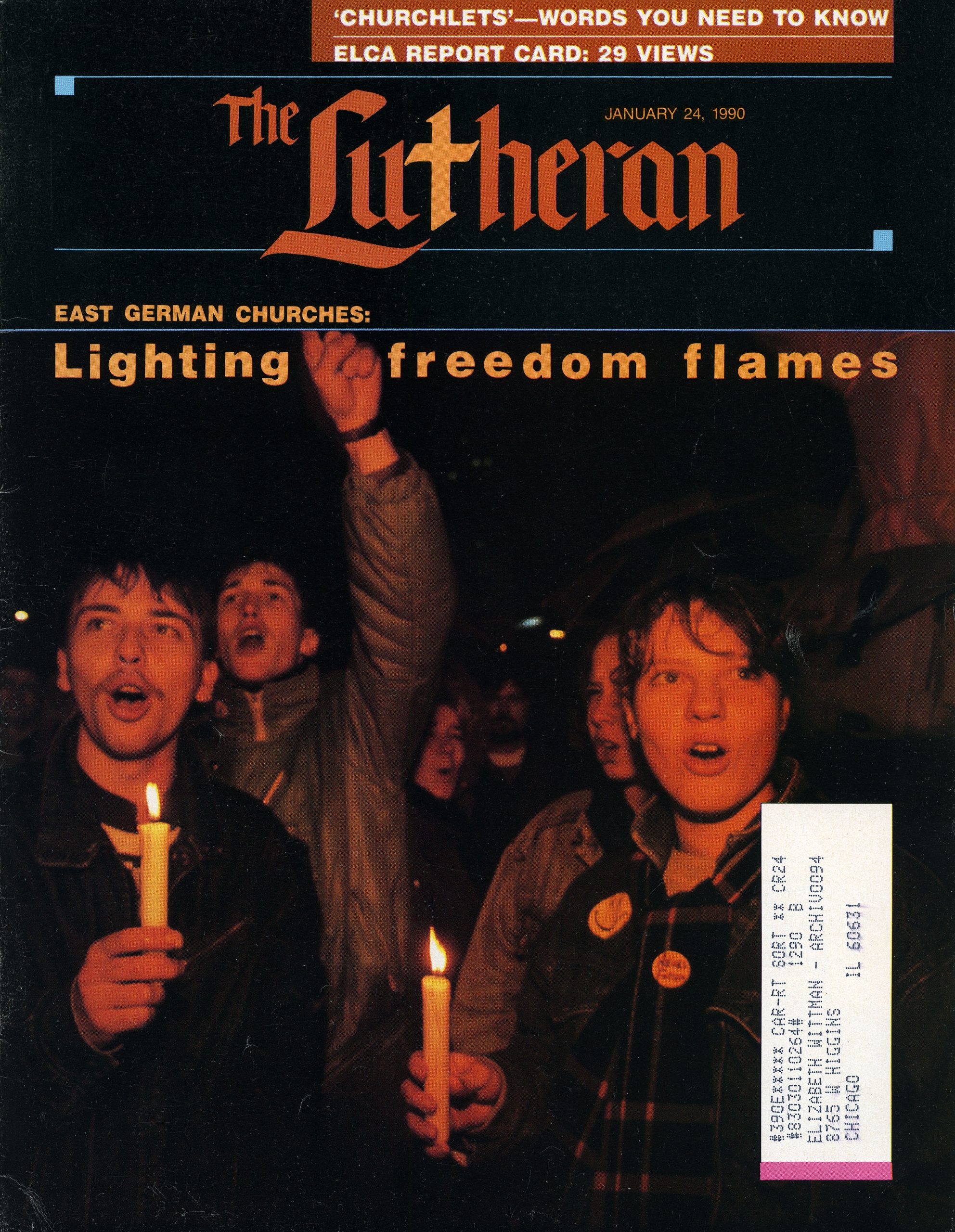 1990
1990
Berlin Wall falls
Following the fall of the Berlin Wall in November 1989, The Lutheran runs a cover story, “Breaking walls—building bridges,” for its Jan. 24, 1990, edition. Multiple features in the issue highlight the ways in which the East German church fostered demonstrations and kept them peaceful, and how its role was continuing and changing in light of efforts to unite Germany. The story “A tale of two protestors” details how the Lutheran church was able to help bring about the downfall of the communist state in East Germany, offering a “classroom of freedom” that was otherwise not available to people there.
1994
Lutheran agencies aid Rwandan refugees
In the wake of the genocide that occurred between April and July during the Rwandan Civil War, about 2 million Rwandan residents were displaced. The Lutheran’s July story “‘We are all refugees’” reports on the aid Lutheran agencies have been able to offer the more than 250,000 Rwandans who have fled to the Benaco, called “the world’s largest refugee camp,” in neighboring Tanzania. The Lutheran’s issue reports that the LWF Council has voted to provide logistical support to relief agencies in Rwanda, including drilling rigs for wells in new refugee camps.
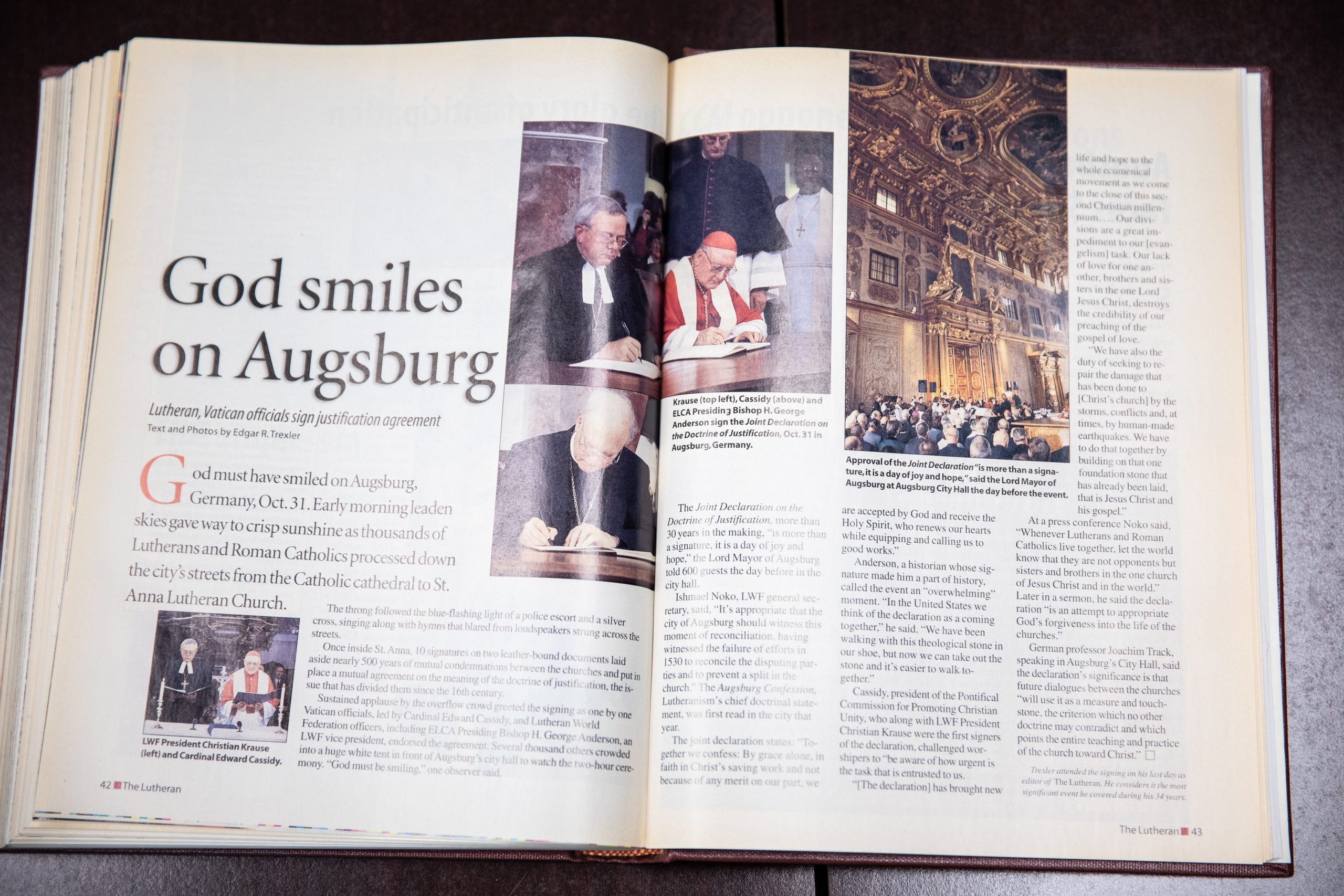 1999
1999
Joint Declaration signed
On Oct. 31, Reformation Day, the signing of the Joint Declaration on the Doctrine of Justification by representatives of the Vatican and the LWF in Augsburg, Germany, occurs. In a story, “God smiles on Augsburg,” about the historic agreement in its December issue, The Lutheran reports that the declaration, “more than 30 years in the making,” was called “more than a signature, it is a day of joy and hope” by Peter Menacher, lord mayor of Augsburg. Article author Edgar Trexler attended the signing on his last day as editor of The Lutheran and writes that he considers it the most significant event he covered in his 34 years with the magazine.
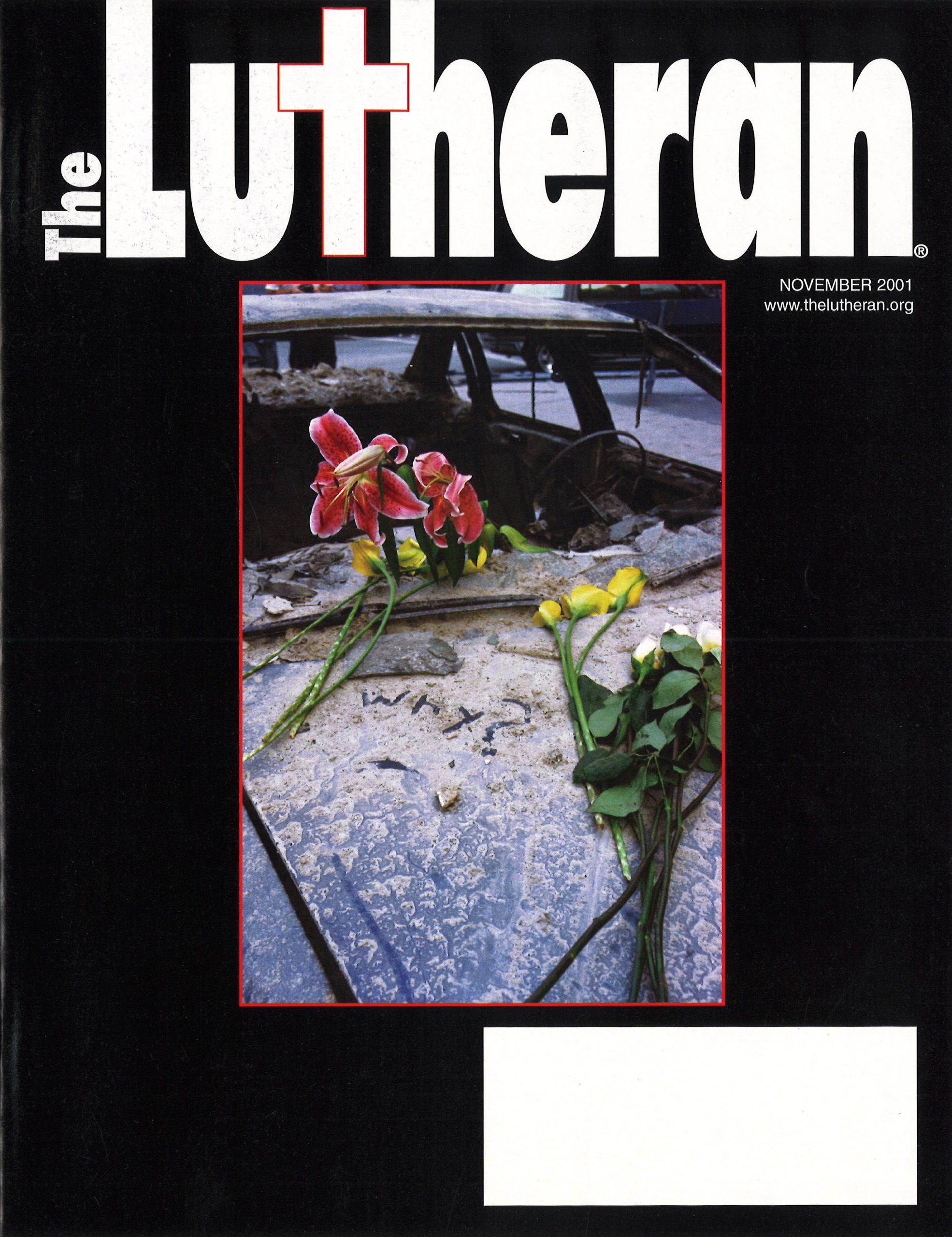 2001
2001
9/11 special coverage
Pages 10-25 of The Lutheran’s November issue are devoted to coverage of the Sept. 11 terrorist attacks. Stories highlight New York City clergy and congregational response to the events; Lutheran first responders on the scene and what they’re experiencing; how Lutheran Arab Americans 9/11 special coverage fear hate crimes, which rose significantly following 9/11; theologians offering points of reflection on the attacks; the ministry of local Lutheran chaplains; and more. One article, “A city not forsaken,” refers to the “patchwork quilt of stories revealing how the suffering are connected to God and each other.” Pastors have become the “story-bearers,” Stephen Bouman, then bishop of the Metropolitan New York Synod, is quoted as saying.
 2005
2005
Hurricane Katrina special coverage
Following the devastation of Hurricane Katrina in August, articles in the October, November and December issues of The Lutheran are devoted to stories about how Lutherans were impacted by, and responded to, the deadly cyclone. The November cover story features ELCA congregations that have provided housing to families displaced by Katrina. Other articles highlight the ways in which rostered ministers and congregations, locally and nationally, are participating in relief efforts.
2009
Churchwide Assembly adopts social statement on human sexuality
The 2009 Churchwide Assembly, held Aug. 17-23 in Minneapolis, makes two key votes: approving a social statement on sexuality that acknowledges same-sex relationships, and adopting a resolution opening the door to ministerial positions for people in same-sex relationships. A news story in The Lutheran’s September issue, “Assembly takes dramatic step,” reports that the social statement, “Human Sexuality: Gift and Trust,” required a two-thirds vote, “and passed by exactly the number of votes required.” The rostering measure, requiring a simple majority, passed 549-451, the piece notes. An adjoining story, “What next?” reports on, in part, looming conflict within the church following the votes.
2016
Living Lutheran launches
The Lutheran changes its name to Living Lutheran, launched with the April issue. After having been one of the earliest church magazines to go online, the new name and enhanced website (livinglutheran.org) look to focus on continuing to widen its digital presence and further its reach.
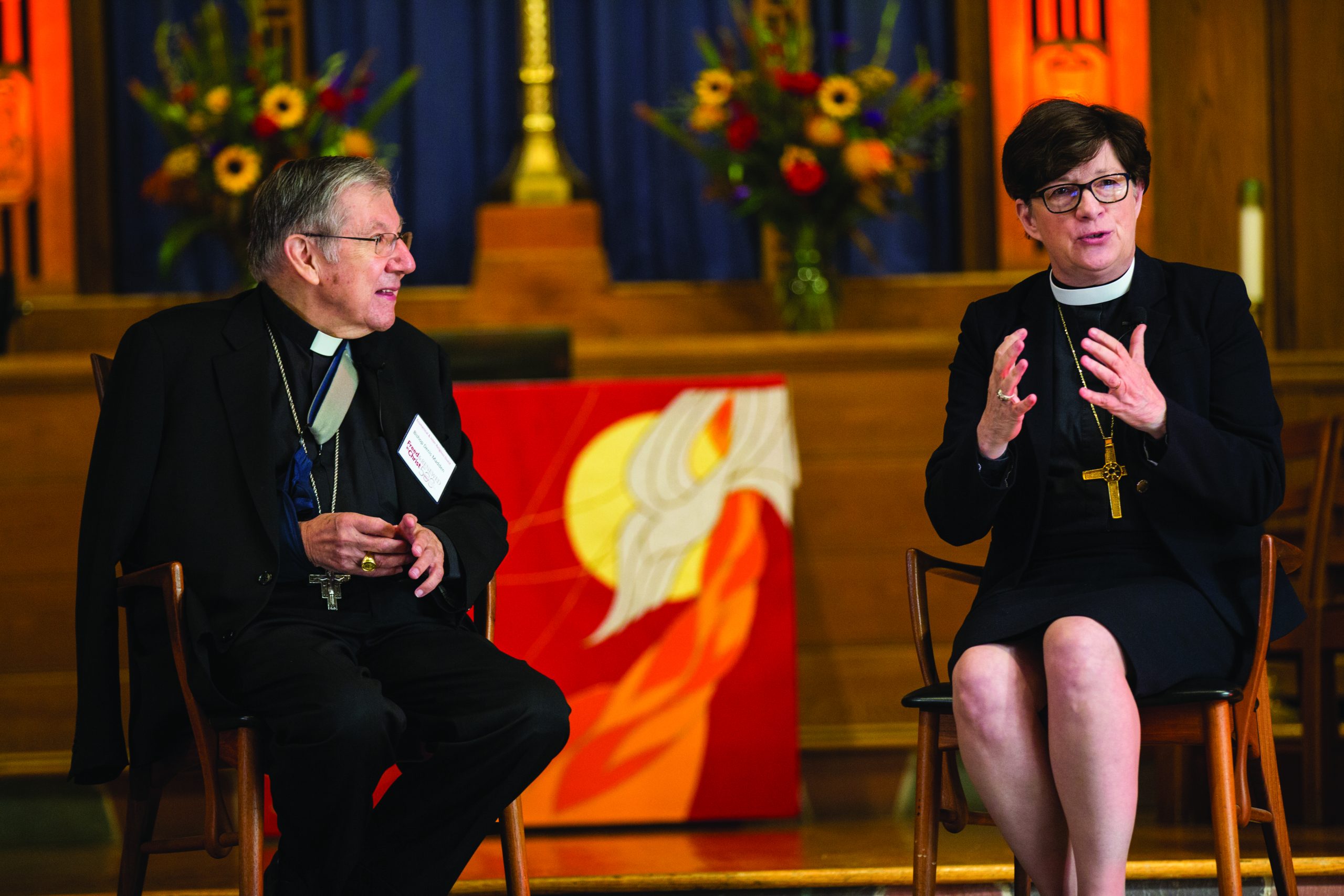 2017
2017
500th anniversary of the Reformation
The 500th anniversary of the Reformation is observed. Beginning with its January issue, Living Lutheran publishes a 10-month series, “Reformation 500,” exploring 500 unique aspects of the Reformation. The October lead feature, “Freed in Christ to serve the neighbor: 500 years of Lutherans in action,” explores how the ELCA’s “Reformation roots” guide the church’s ministry and actions today, and the moment’s “Lutheran crossroads” that will determine its future. A news story in the December issue reports on “Looking Back and Called Forward: ELCA 500,” a commemoration of the anniversary held Oct. 31 in Washington, D.C.
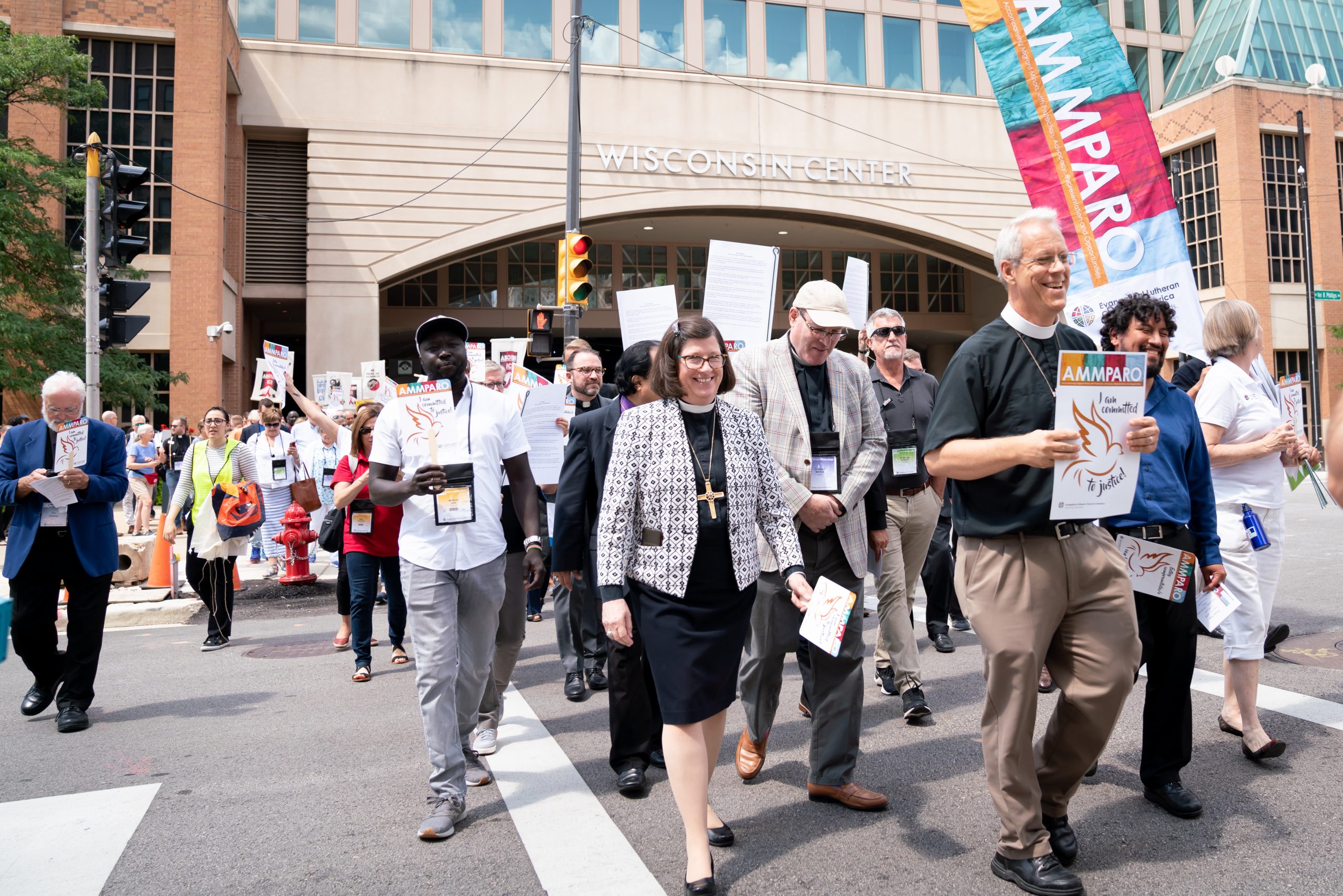 2019
2019
ELCA becomes a sanctuary church
The 2019 Churchwide Assembly, held Aug. 8-12 in Milwaukee, votes 718-191 to approve a memorial that declares the ELCA a sanctuary church, becoming the first North American denomination to do so. Living Lutheran’s May 2020 lead feature, “Sacred hospitality,” examines what it means to be a sanctuary denomination, and how the declaration builds on the church’s commitment to accompany migrants with protection, advocacy, representation and opportunities through its AMMPARO strategy, approved by the 2016 Churchwide Assembly. “You really have to define sanctuary in your context and what it means to accompany people,” Christopher Vergara, who put forward the amendment to declare the ELCA a sanctuary church body, is quoted as saying.
2020
In March the novel coronavirus COVID-19 is declared a global health emergency by the World Health Organization, upending life for people and institutions, including the church, across the world. Throughout the year—and subsequent years—Living Lutheran publishes news stories covering the unique and powerful ways ELCA members, leaders and congregations responded to the moment and how the church can move forward, as well as reflections about the theological lessons the unprecedented time offered. Following the murder of George Floyd and movements that brought discussions of race and racism to the forefront, the magazine also covers the ways in which COVID-19 and racial justice intersect.
2024
The next chapter of Living Lutheran unfolds as an all-digital publication. We will continue sharing the stories of the ELCA—your stories—into the next era of storytelling for our church.



